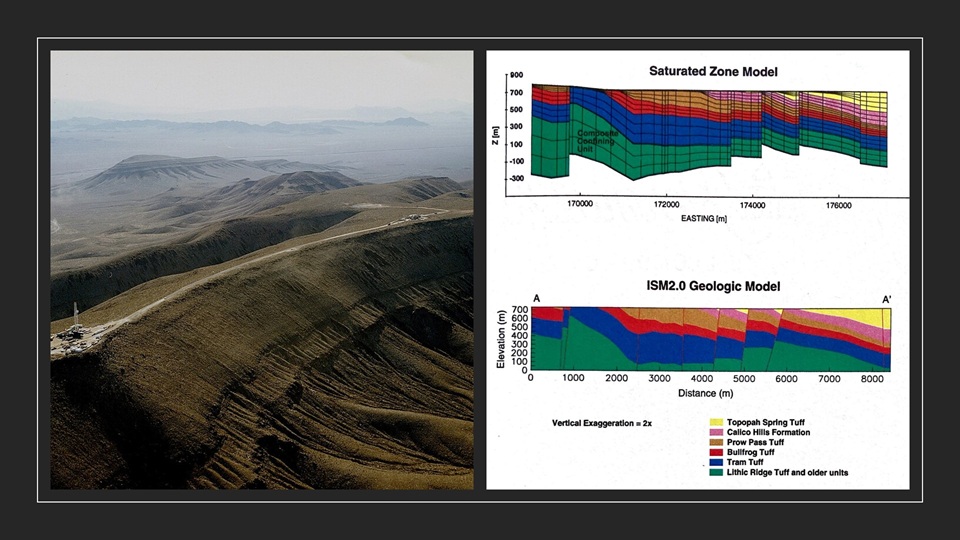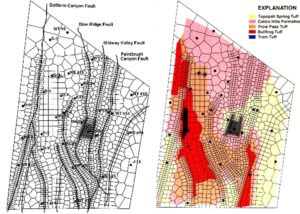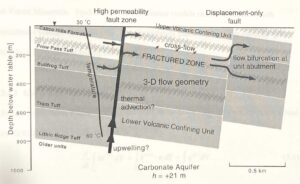Used the computer code TOUGH2 (Berkeley National Lab) to construct a 3-D groundwater model of the proposed nuclear waste repository at Yucca Mountain, Nevada. Model accurately represents faulted strata of variable thicknesses, orientations, and displacement along strike. Numerical simulations of the flow downstream from the region directly below the potential repository show that a high permeability geologic layer may act as the primary conduit for repository source water, and because all geologic units are offset by faults, flow is diverted and bifurcated laterally and vertically downgradient. This gives rise to unforeseen and complicated flow geometries that contribute to contaminant macrodispersion.
Unique Analytical Methods: Developed a post-processor for particle tracking and an analytical solution of transient 3-D gas flow in the vadose zone.
Figures below:
Cross section of the groundwater flow model compared to the 3D Geologic Framework model of Yucca Mountain; Numerical grid and distribution of rock units at the top of the saturated zone flow model; Conceptual Model of groundwater flow beneath Yucca Mountain.
Link: Effects of Faulted Stratigraphy on Saturated Zone Flow beneath Yucca Mountain (with C.M. Oldenburg), Field Testing and Associated Modeling of Potential High-Level Nuclear Waste Geologic Disposal Sites (FTAM) conference, Berkeley, CA, December 15-16, 1997. https://tough.lbl.gov/assets/files/02/documentation/proceedings/1998-CohenOldenburg.pdf




